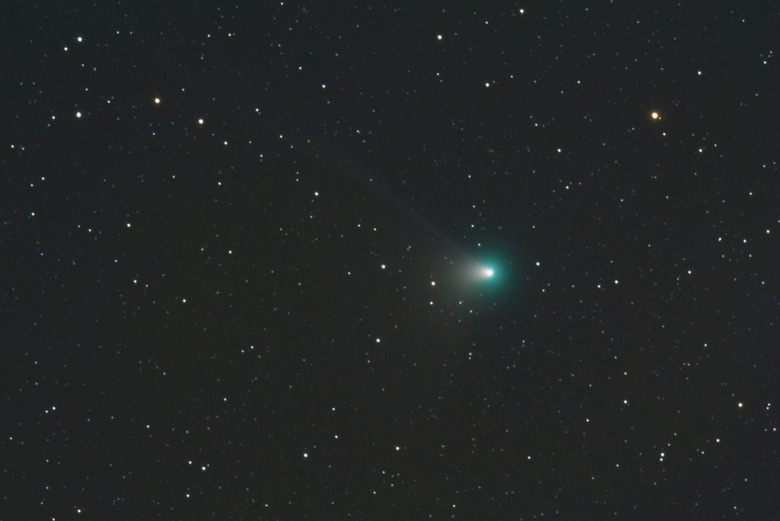A Rare Green Comet Will Pass Earth Tonight: How To Watch It
Wednesday, February 1, will be an intriguing day for skywatchers as a rare, green comet will pass close to Earth for the first time in 50,000 years. Tonight, though, the comet will pass within 26 million miles (42 million kilometers) of our planet, making its closest approach to Earth since the time of the Neanderthals.
We've known that this once-in-a-lifetime comet was making its way through the inner solar system for several weeks now, and that it will continue to be visible throughout the rest of this month, too. However, the rare, green comet is expected to be brightest to those observing it from Earth later this evening. It may even be bright enough to see with the naked eye.
The comet is expected to become visible at around 6:49 p.m. EST this evening. At that point in time, it will appear at 49 degrees over the northern horizon. The green comet, known as C/2022 E3 (ZTF), will then climb to 58 degrees over the northern horizon, its highest point in Earth's sky, at roughly 9:46 p.m. EST. It will vanish in the dawning light at 5:57 a.m. EST on February 2.
For the best possible chance of spotting this rare, green comet as it passes close to Earth, In-the-sky recommends looking towards the Camelopardalis constellation, which is a faint area of sky devoid of bright stars close to our northern celestial pole.
While this beautiful comet may be visible to the naked eye, those who don't want to go out in the cold and stare up at the stars can watch it from the comfort of their homes. The Virtual Telescope Project will host a free webcast of the green comet as it passes Earth at around 11 p.m. EST.
The orbital period of this comet is 50,000 years, according to scientists at NASA, which means this rare, green comet won't pass close to Earth again during our lifetimes. Some even believe that it may not have a designated orbit, and that this could be the last time it passes Earth at all. Either way, make sure to get a glimpse of this rare celestial object before it speeds away.
